Disclosure: Meeple Mountain received a free copy of this product in exchange for an honest, unbiased review. This review is not intended to be an endorsement.
“This is a joke, right?”
One of the members of my Chicago-area strategy game group posted the quote above with a link to the announcement from Stonemaier Games that yet another Wingspan game was hitting the market in early 2025. A couple people surmised that this time, it really WAS a joke. After doing birds and then dragons, there was no way that Stonemaier was going back to the well with another Wingspan game.
As we now know, Finspan—notably subtitled “A Wingspan Game”—is a reality. And I want to applaud the team at Stonemaier by leaning in for the same reasons why we have a billion Star Wars properties, 10 movies (and counting) featuring the team behind The Fast and the Furious, and dozens of Harry Potter adaptations: money.
Wingspan is a massive hit, and continues to sell well for Stonemaier. Stonemaier has shareholders. Those shareholders, one assumes, like money. Making more Wingspan games is good for business, pure and simple. And while it is commonplace for gamers in my network to try and minimize the effect Wingspan has had in the hobby, the reality is that Wingspan—as well as the second full game in the Wingspan line, the dragon-themed Wyrmspan—continues to sell thousands of copies each year. All in, the Wingspan family (so, the base game products that include Wingspan, Wingspan Asia, and Wyrmspan) have sold nearly 3 million copies through the end of 2024…and that doesn’t even include expansion content.
For those who don’t follow tabletop, selling even 25,000 copies of a hobbyist game is incredible. That makes Finspan a logical next step. It will shock no one if we get expansions for these games for the rest of time, assuming they continue to sell well.
That also informs my thoughts on Finspan. It doesn’t stray far from its predecessors, for the reasons noted above. Finspan gets bonus points because it follows the path of nearly every medium-to-heavy strategy game that has sold well in recent years: Finspan is Wingspan Lite.
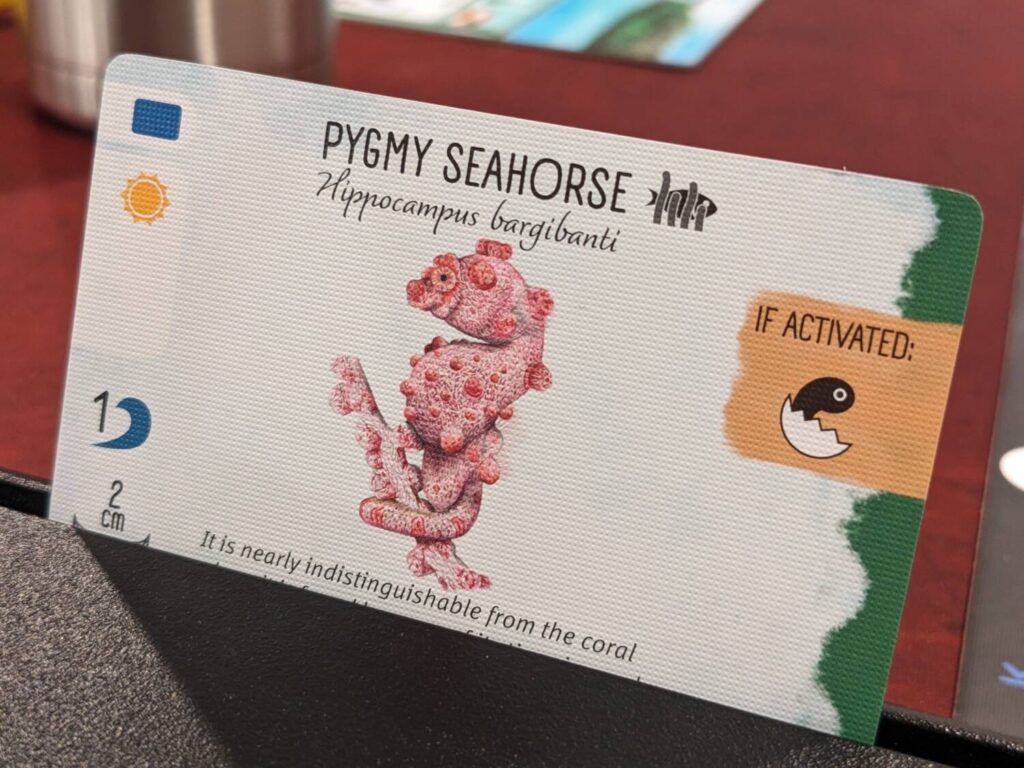
Go Fish, But Keep Your Head Down
Finspan is a Wingspan game, which means it is a 1-5 player tableau builder that plays in about 20 minutes per player. It features more than 100 beautiful cards drawn by credited artists Ana Maria Martinez, Catalina Martinez, Mesa Schumacher and Natalia Rojas. Finspan was designed by David Gordon and Michael O’Connell, and was developed by Elizabeth Hargrave, the designer of the original Wingspan.
If you decide to add Finspan to your collection, note that my recommendation will be for you to try Finspan solo, or maybe with a friend. Adding more players did not make the game more or less interesting, and since those extra bodies take up time, I don’t recommend Finspan for a larger group (especially if you have slower players in your network).
Finspan swaps in fish for birds, then greatly streamlines the Wingspan experience. In fact, if you have never played any of the three games and you/your network are built around the play of more casual games, Finspan is absolutely the right call. Gone are things like…well, choices, such as the open card market in Wingspan, or the rolled dice results used to collect food needed to play bird cards.
Finspan can be taught in just under 10 minutes. Gameplay is simple and lighter than Wingspan, with just two action choices on a turn: play a card, or “dive”, which is essentially a chance to run your engine to collect more cards, eggs, or to turn eggs into baby fish (simply called “Young”) and move young around your ocean board. Like Wingspan, cards can only be played in certain sections of your personal board (known here as your ocean). Cards in Finspan often have further restrictions on which spaces they can take up, further limiting choice as well as chances at analysis paralysis from those slower players at the table.
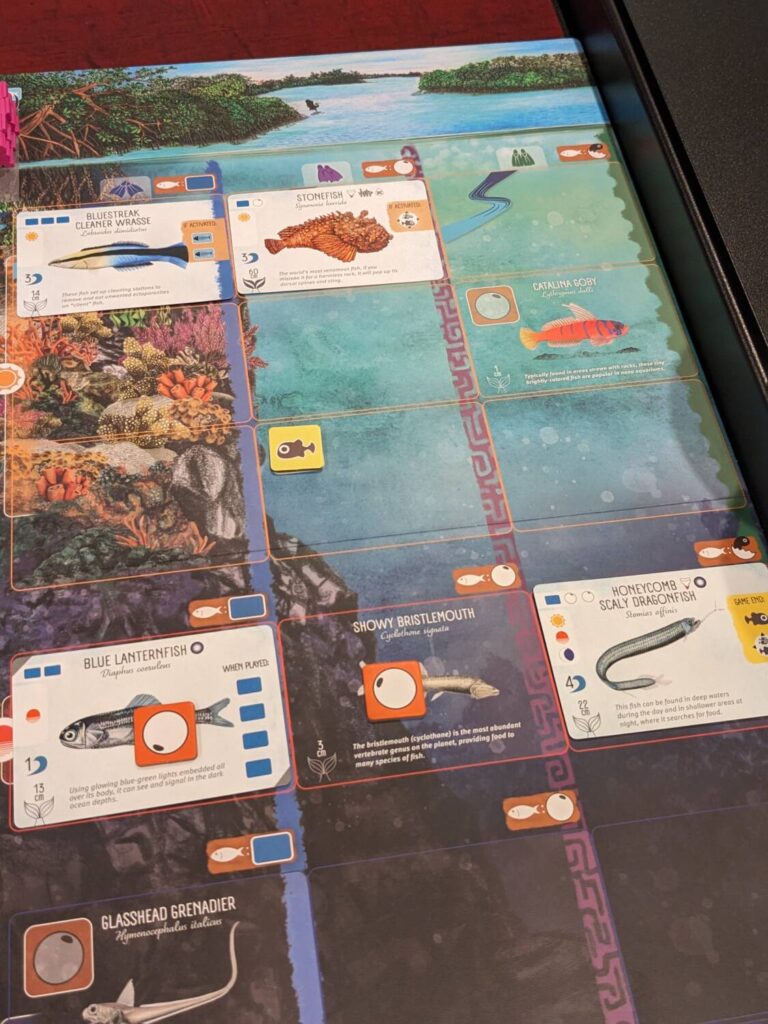
One player in my five-player game of Finspan noted that the game is a bit more “on rails” than Wingspan. By that, we were referring to the video game terminology, where players have the “freedom” to do what they want but in reality they mostly have to deal with the world directly in front of and to the right of a 2D character onscreen. In Finspan, you have to play cards from your hand. It’s very easy to get cards, and when you get them, they are all drawn from the top of the deck or from a personal discard pile, severely limiting options but also speeding up play.
Instead of using five different types of food to play a bird card, Finspan strips most of those choices away too. Many cards can be played by simply discarding cards from hand. Unlike games with more tense choices (such as the classic cards-as-costs games like Race for the Galaxy and San Juan), players keep those discarded cards nearby and can usually get them back during the card income action. In one of my games I had a juicy card with a game-end scoring condition, I used it to pay for another card three different times before finally playing it into my ocean board in the game’s final round.
Like Wingspan, Finspan is played across four rounds, but here players get six actions each round for 24 total actions. There’s an end-of-week scoring that we found to align very closely with the game elements you should be focused on anyway: getting a lot of eggs onto cards, forming single young into schools of fish, completing rows of cards, or collecting tags if a player was lucky enough to draw those kinds of cards from the draw pile. (In the game’s advanced variant, you can swap in other scoring goals using double-sided tiles for the first three weeks.)
The icing on the vanilla-flavored cake? Many of the card activations in Finspan that trigger when a player runs their engine grant a benefit to other players. Finspan, like Wingspan and other games like it (such as Raising Robots, from Nauvoo Games) is extremely heads-down. The main points of interaction come when players score at the end of each round, but depending on your table space, it’s impossible to follow what other players are doing since you won’t be able to track all the things happening on their ocean boards.
That also means there is no way to disrupt the plans of your opponents. “Are there any ‘mean’ cards in this deck?” one player asked.
“No,” I said. “Everything in Finspan is pretty friendly, so the question you should be asking is ‘when are you going to play a card that gets ME more stuff?”
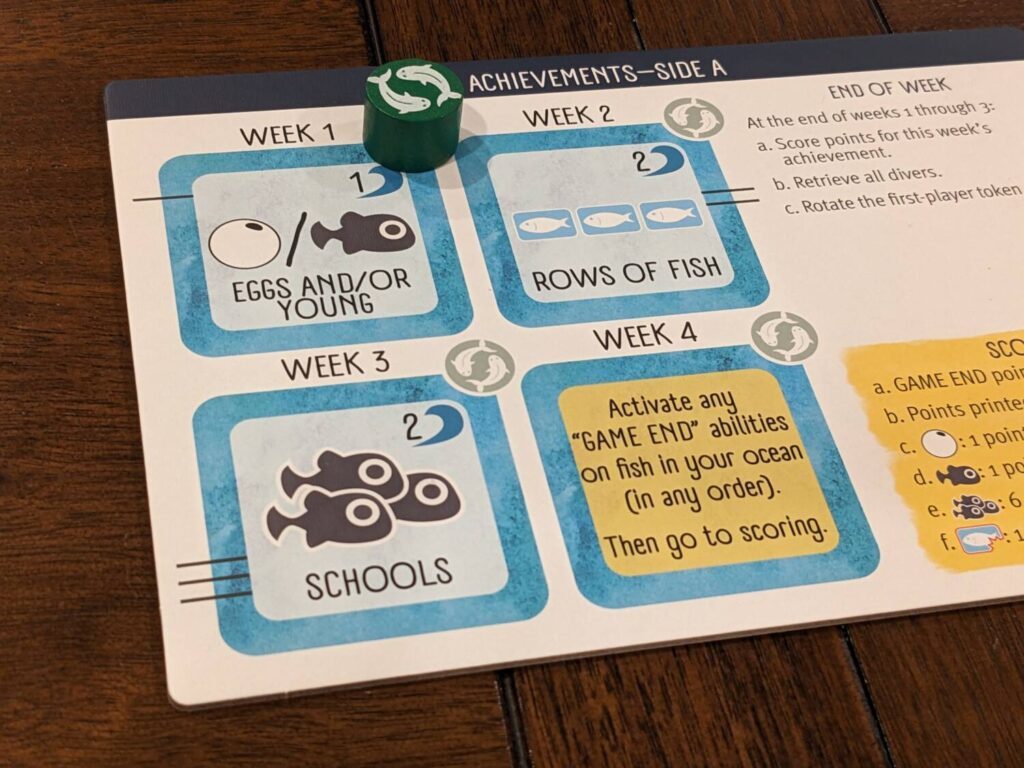
The Muggles
Finspan was fun. I liked Wingspan but I don’t have it in my personal top tier of games and no longer own a copy. I have tried the Wingspan implementation on Board Game Arena and that is my preferred way to play that now. (I have not tried Wyrmspan.) As a person who appreciated the design work of Wingspan but didn’t need to revisit it often, I think Finspan does a nice job of replicating the best parts of Wingspan while taking it in a direction different enough to warrant consideration of owning both games.
I don’t have any major negatives about my experience across two complete plays (two players, then five players) and an aborted solo play. Once I began playing Finspan solo, using the “Nautoma” dedicated solo mode developed by The Automa Factory, I realized that Finspan is already a multiplayer solitaire experience…but when playing solo for real, you have to manage another board, and I would rather play this with my wife than as a dedicated solo game. (My wife plays faster than I can pretend to be a second person, using the automa.) For those looking to try this solo and who do not have a partner in crime to join at the table, Finspan is definitely worth a look.
Core hobbyists would be better served sticking with the base Wingspan experience. Some of the strategy gamers who joined me for the five-player game complained about the sheer randomness of the card draw; that’s the deal when there is no card market, right? Out of 135 cards, some of them are just strictly better than other cards. Each fish card has a point value ranging from 1-10 points, some cards grant instant bonuses when played, and some cards might fall into your lap that line up nicely for a handsome end-game bonus.
Sure, I could take more actions to draw more cards and hope to distill my board into the cards that fit best. But a strategy gamer will want to have more control over the outcome, and offering no card market in a tableau-building card game is a miss for these types of players.
That’s why Finspan will live in certain collections as “Baby’s First Wingspan”, and for some players, I think Finspan will be the perfect mix thanks to these limited choices. Finspan is essentially what I guessed it would be, which is great news for Wingspan fans—a reliable, breezy, well-produced strategy game for casual players and their families.


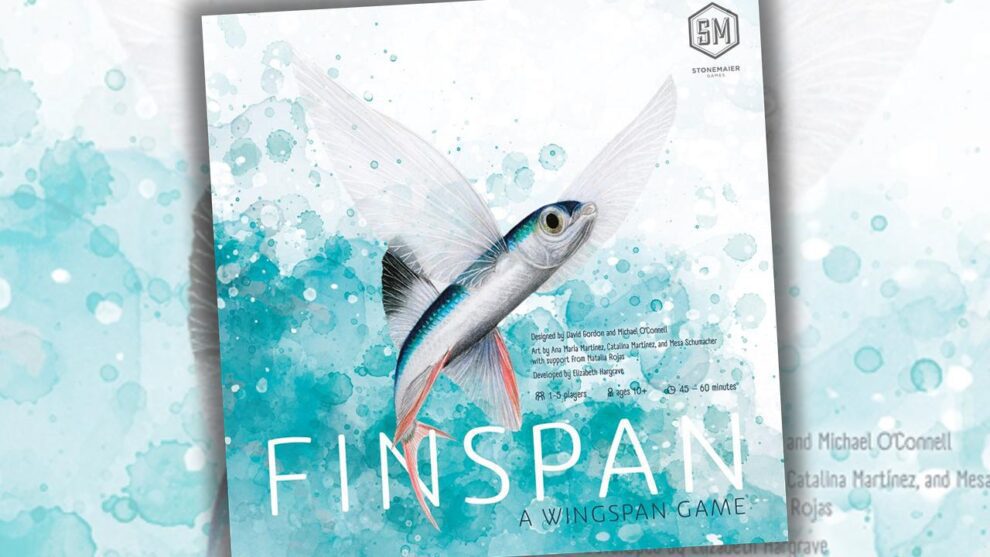







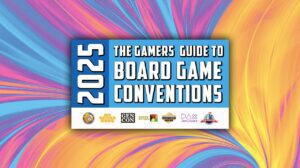

Add Comment